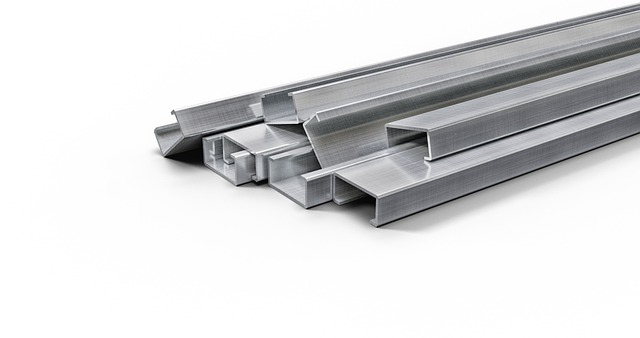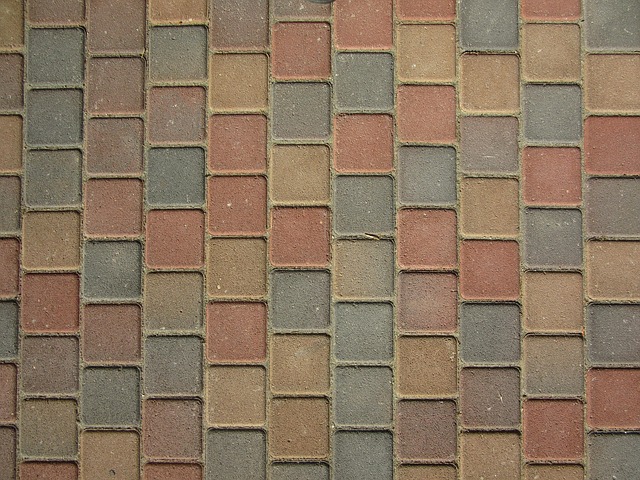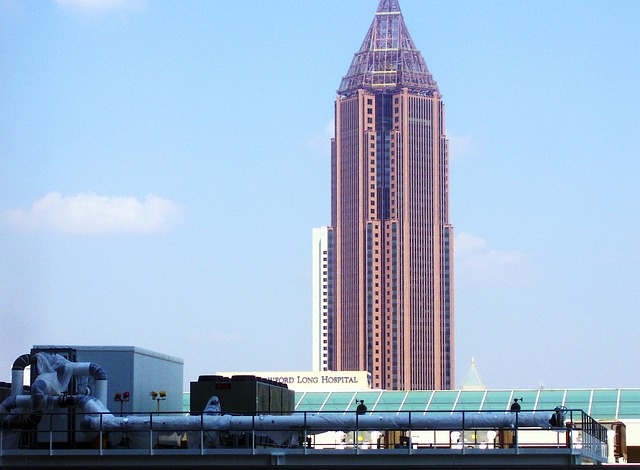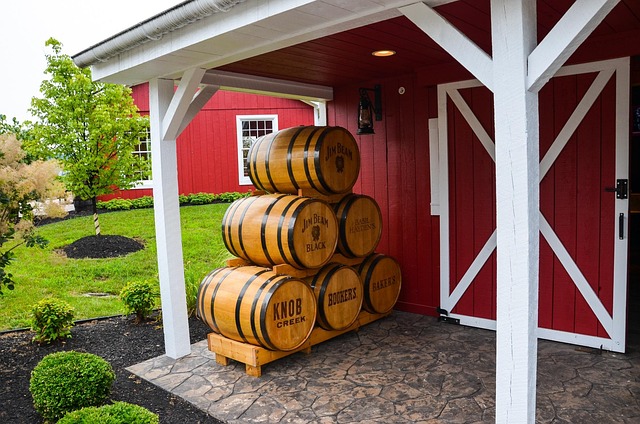Glue laminated beams (GLBs) offer superior structural integrity and advantages over engineered wood beams, with enhanced strength, durability, and consistency. They transform modern construction by enabling longer spans, heavier loads, and open interior designs, while promoting sustainability through reduced waste and recycling. The choice between GLBs and engineered wood beams depends on cost, environmental factors, and project specifics.
“Discover the revolutionary world of Glue Laminated Beams—a modern construction solution that promises to transform the industry. In this article, we delve into the advantages of glue laminated beams over traditional engineered wood beam methods. From unparalleled structural integrity and enhanced design flexibility to remarkable sustainability and cost-effectiveness, these beams offer a game-changing approach to construction. Explore how their unique properties are redefining building standards.”
- Glue Laminated Beams: A Modern Construction Solution
- Engineered Wood vs. Traditional Beam Construction
- Benefits of Using Glue Laminated Beams
- Structural Integrity and Design Flexibility
- Sustainability and Cost-Effectiveness Advantages
Glue Laminated Beams: A Modern Construction Solution

Glue Laminated Beams: Revolutionizing Modern Construction
In today’s construction landscape, engineers and architects are increasingly turning to glue laminated beams as a modern solution, offering distinct advantages over traditional engineered wood beams. The primary difference lies in the structural integrity and manufacturing process. Glue Laminated Beam vs. Engineered Wood Beam: while engineered wood beams rely on the strength of the wood grain, glued laminated beams (GLB) incorporate advanced glues to bind multiple layers of timber, enhancing their load-bearing capacity. This innovative approach results in superior strength and rigidity, making GLBs ideal for high-rise buildings and complex architectural designs.
Advantages of Glue Laminating for Beam Construction include increased structural efficiency, reduced material waste, and enhanced durability. Unlike traditional wooden joists, GLBs can withstand heavy loads with minimal deflection, ensuring the structural integrity of modern buildings. Moreover, glue lamination provides a more consistent product, eliminating variability found in solid lumber. For eco-conscious projects, glue laminated beams offer a sustainable alternative, as they utilize the entire tree and minimize scrap wood. Discover more about these game-changing construction solutions at unalam.com.
Engineered Wood vs. Traditional Beam Construction

In the realm of construction, the debate between Glue Laminated Beams vs. Engineered Wood Beams has been a hot topic for decades. Traditional beam construction relies heavily on solid lumber, but modern engineering has introduced innovative alternatives like engineered wood beams and glue laminated timbers. Understanding the structural comparison between these two options is crucial for architects, engineers, and builders looking to optimize their projects.
Glue Laminated Beams, as the name suggests, involve bonding multiple layers of wooden strips with high-strength glues, creating a single, incredibly strong timber. This process enhances both strength and durability compared to traditional wooden joists. In contrast, Engineered Wood Beams are manufactured using advanced wood engineering techniques, such as gluing, pressing, or laminating, to produce uniform and predictable structural components. These engineered solutions offer numerous benefits, including superior load-bearing capacity, reduced weight, and enhanced dimensional stability. When considering Glue Laminated Beams vs. Engineered Wood, factors like cost, environmental impact, and specific project requirements play a significant role in the decision-making process. For instance, while glue lamination excels in structural integrity, engineered wood beams are known for their versatility and suitability for complex architectural designs, making them a preferred choice for many modern construction projects. To learn more about these advanced beam options, visit us at unalam.com.
Benefits of Using Glue Laminated Beams

Using Glue Laminated Beams offers a significant advantage over Engineered Wood Beams, especially when comparing their structural properties. Glue Laminated Beams (GLB) consist of multiple layers of wood veneers glued together, creating a high-strength composite material. In contrast, Engineered Wood Beams are manufactured from dimensional lumber or other wood products and incorporate various engineering techniques to enhance their performance. A glue laminated beam vs. engineered wood: structural comparison reveals key differences in their construction and capabilities.
GLBs provide superior strength and durability, with the ability to span longer distances and support heavier loads. The lamination process improves the overall integrity of the beam by enhancing its shear and bending resistance. This makes GLBs a game-changer in modern construction, enabling architects and engineers to design buildings with open interiors and innovative floor plans. Moreover, advancements in glues used in laminating timber have further enhanced the structural capabilities of GLBs, making them a sustainable building solution that prioritizes both strength and environmental considerations. Give us a call at (607) 369-9341 to learn more about how Glue Laminated Beams can revolutionize your construction project.
Structural Integrity and Design Flexibility

Glue laminated beams offer significant advantages over traditional engineered wood beams in terms of structural integrity and design flexibility. When comparing Glue Laminated Beams vs. Engineered Wood, it’s evident that glued timber excels in strength and durability. The lamination process involves bonding multiple layers of wood together with high-quality glues, creating a single component stronger than its individual parts. This method enhances the load-bearing capacity of beams, enabling them to withstand heavy structural loads without compromising on design possibilities.
Unlike solid lumber, which may be limited in size and strength, engineered wood beams provide consistent performance across various dimensions. Their versatility allows for complex architectural designs, as they can span longer distances and accommodate different load requirements. Moreover, the lamination process is an eco-friendly choice, as it utilizes sustainable timber resources and promotes efficient material use. For project managers and engineers, selecting between glued laminated timbers and engineered wood beams depends on specific structural needs, budget considerations, and design preferences. To learn more about these innovations in beam construction, visit us at unalam.com.
Sustainability and Cost-Effectiveness Advantages

Glue laminated beams stand out in the structural engineering landscape as game-changers, offering significant advantages over traditional engineered wood beams and solid lumber choices. In terms of glue laminated beam vs. engineered wood, the former excels in strength and durability, ensuring structures can withstand heavy loads and extreme weather conditions. This is primarily due to the advanced advantages of glue laminating for beam construction: multiple timber layers are glued together, creating a strong, uniform structure. Unlike traditional wooden joists, these beams provide consistent performance, making them ideal for modern architectural designs that demand both aesthetics and functionality.
Moreover, glue laminated beams represent a sustainable building solution. The lamination process reduces waste compared to solid lumber cutting, and the resulting material is often recycled or reused. This aligns with the growing trend in green architecture, where engineered wood beam applications in modern construction are increasingly common. For instance, engineers can calculate the precise load capacity of glued beams using sophisticated calculations, ensuring optimal structural integrity without excess material use. To explore these benefits further, visit unalam.com.
Glue laminated beams represent a significant evolution in construction materials, offering a compelling alternative to traditional engineered wood beams. By enhancing structural integrity and design flexibility while promoting sustainability and cost-effectiveness, these modern solutions are truly game changers. When considering the benefits of glue laminated beams vs. engineered wood beams, it’s clear that their advantages make them an ideal choice for today’s construction projects.














